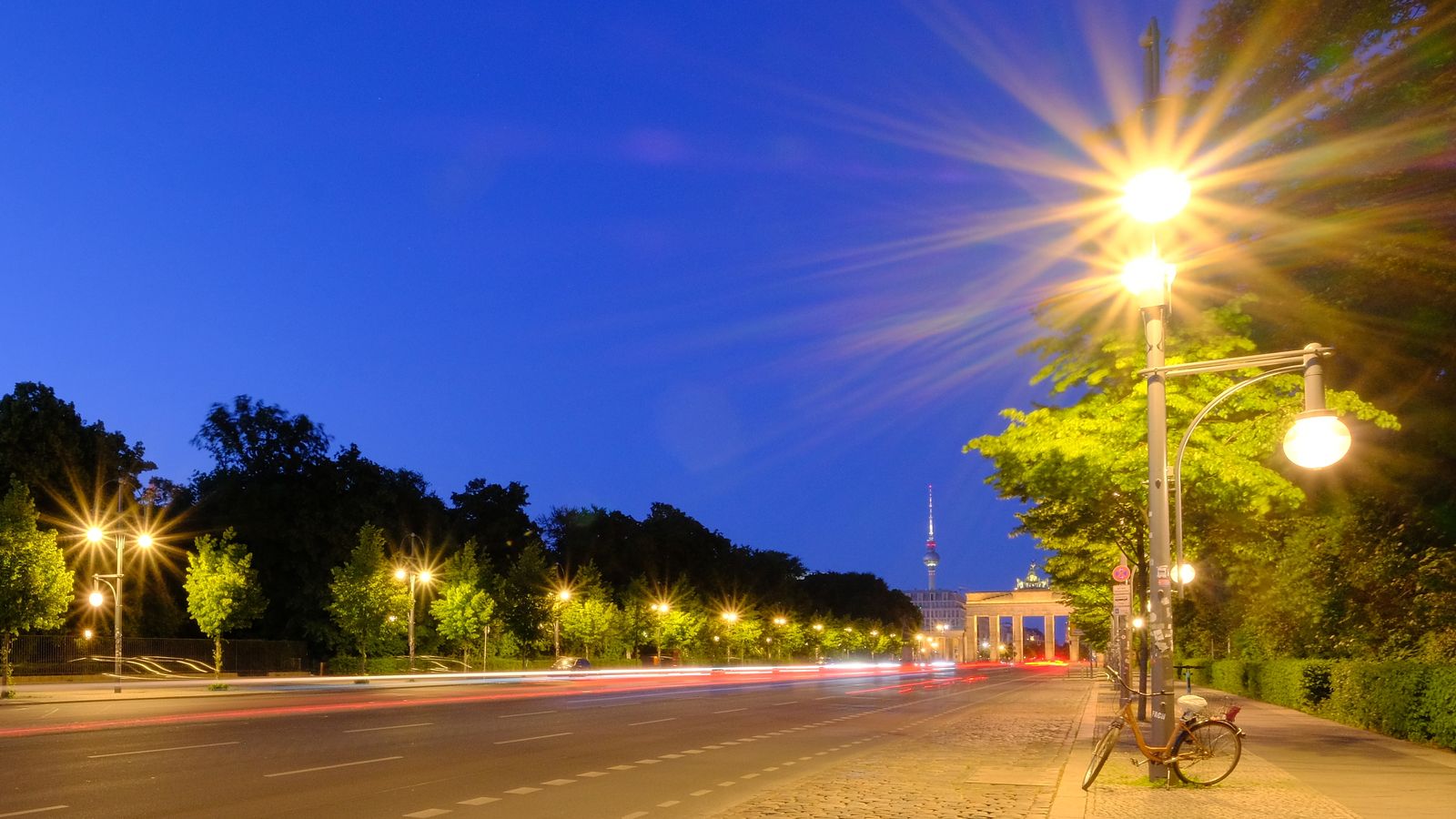
Lighting management
We plan and build lighting systems
We operate around 220,000 electrical and gas-operated public lighting systems on behalf of the State of Berlin.
Among others,
- planning and coordinating maintenance works,
- troubleshooting and fixing damage,
- switching on and off the State’s own street and tunnel lighting, and
- advising the State of Berlin on all economic and technical questions relating to street lighting
are tasks handled by our BerlinLicht department.
Our services
Management of street lighting facilities
Maintenance
- Changing bulbs
- Corrosion protection
- Stability assessments
- Checking electrical facilities to DGUV regulation 3
Fault and damage management
- Fault logging (by app, email and control centre)
- Lighting inspection (field service)
- Troubleshooting
- Damage repair and settlement with the person responsible
Materials management
- Procurement of replacement materials
- Handling warranty claims
Your advantages
- Billing per lighting point
- Fault history for each lighting point
- Digitalised processes
- Detailed reporting
Independent and individual advice on street lighting
- Technical and economic advice for lighting facilities
- Suitability assessment of lamps
- Technical light measurements and evaluation of lighting situations
- Checking lighting facilities after construction
- Advice on new and replacement lamps
Your advantages
- Economic security
- Individual advice on your project
- Independent, neutral assessment of lighting facilities
Planning and construction of lighting facilities
- Light planning – from design to handover
- Lighting calculations for streets, squares and paths to DIN 13201 or the Berlin Lighting Concept
- Technical light consultation for pedestrian crossings
- Development and design of lighting projects and plans
- Creation of tendering documents or bills of quantities
- Materials procurement
- Support in procuring subsidies
- Development of needs-based, individual lighting concepts
Your advantages
- Planning to DIN 13201 or the Berlin Lighting Concept – depending on location
- Manufacturer-independent lighting calculations
- Planning in accordance with economic and technical considerations
- Trained and certified (ELE) lighting specialists
- Planning and execution from a single provider
Frequently asked questions
What planning documents are relevant to me?
To put up street lighting on public roads, streets and squares in Berlin, the facility needs to fit the Berlin Lighting Concept.
If lighting is planned for another community or a private path or street, general regulations such as DIN 13201 apply.
What quality characteristics are set by the Berlin Lighting Concept?
You can find these out in the Berlin Lighting Concept. They are differentiated primarily by the categories of streets described there.
How tall do lampposts have to be? (lamppost height – LPH)
The height of lampposts depends on the width of the street or footpath to be lit.
In Berlin, standard lamppost heights are:
- for straight posts – 4 m, 5 m, 6 m, 8 m, 10 m and 12.5 m
- for parabolic posts – H6, H7.5 and H10
The post height largely depends on the cross-sectional street profile or width of the route to be lit, consisting of road lanes, cycle lanes and pavements, with any existing parking and green spaces.
To put it simply:
the wider the street, the taller the lamppost. The dimensions of neighbouring systems should also be taken into account.
Do Berlin lampposts have special features?
In Berlin, masts need to have sufficiently large terminal compartments.
The lamppost flap must be 120 mm x 500 mm.
The mast needs corrosion protection where it meets the ground in the form of a steel sleeve.
How far apart can lampposts be placed – what is the potential maximum?
The distance between lampposts can be as wide as allows compliance with the quality characteristics set out in DIN 13201 and the determination of an economically sensible result.
This can be simplified to the following rule of thumb:
lamppost height x 5 or 6, but in fact dependent on the cross-section of all parts of the streetscape at the potential positions of the lampposts.
How are lampposts set up (foundations)?
In Berlin, lampposts are placed directly into the soil without a concrete foundation. Smaller lampposts (up to a height of 3 m) have a continuous ground section that is placed into compacted earth. Taller posts are set up with a separate lower part.
In other communities, different methods may be used based on local requirements to set up lampposts.
What lamps or lamp manufacturers can I use?
The choice of lamp should be agreed on in advance with a lighting manager, as the following aspects are relevant:
- subsequent procurement of lamps for additional facilities or replacement after damage,
- limitation of the total number of lamp types used in the city or local community,
- experience with lamps already in use,
- consideration for the planned area of deployment.
How is lighting controlled in Berlin?
Lighting is currently switched on and off using European radio ripple control. This means antennae and receivers are attached to the light. In the future, all lighting facilities will need a Zhaga Book 18 socket integrated in them.
How is lighting supplied with electricity?
In Berlin, a lighting system is usually connected directly to the low-voltage (0.4 kV) Stromnetz Berlin network.
In other communities, they may be supplied via a separate lighting cable network.
